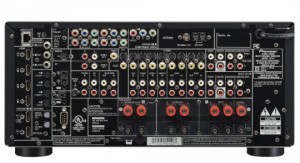AV Receivers – Hidden Heroes of True Home Theater Immersion
 Since we’ve started our blog here at alaTest, we’ve shown you what key features to look for in an HDTV, which Blu-ray Players are the best, and even the best surround-sound headphones, but we’ve neglected to mention perhaps the most important piece to true media immersion in your living room: Audio/Video Receivers. Yes, shame on us.
Since we’ve started our blog here at alaTest, we’ve shown you what key features to look for in an HDTV, which Blu-ray Players are the best, and even the best surround-sound headphones, but we’ve neglected to mention perhaps the most important piece to true media immersion in your living room: Audio/Video Receivers. Yes, shame on us.
A thunderous surround sound experience is absolutely essential if you want to get the most out of your home theater system. It doesn’t matter how big your TV is, or how you pop your popcorn, without the right sound, you can never be fully immersed into your movies/games. AV Receivers (or AVRs as they’re often called) are integral to premium surround sound, and we’ve got a crash course to help you purchase the right AVR.
First and foremost, you’re going to want to rule out any AVRs that don’t support today’s most popular audio formats. Just about any modern AVR will support audio formats like DTS and Dolby Digital, but that’s not enough. Blu-ray movies now feature lossless audio tracks which require DTS-HD Master Audio or Dolby Digital TruHD. You’ll absolutely want to make sure any AVR you’re considering supports both of those. LPCM support can also be especially useful if you play your content from a PC of some sort.
Apart from audio formats, you’ll also want to make sure your AVR supports the right video formats. You’ll more than likely want to ensure it plays nice with 1080p sources. Even more useful, some AVRs even support upscaling SD and 720p sources to 1080p before sending it to your TV. Most AVRs today support 1080p (though a handful only support 1080i, so be careful). Lastly, if you have a 3D TV and you enjoy 3D videos, make sure you AVR supports 3D video signals.
Inputs and Outputs
Most AVRs have a handful of video inputs of various types (generally a few HDMI ports, some composite connectors, and a few component connections) and a single HDMI output. That single HDMI output connects to your TV. The rest of your home theater equipment connects to the AVR, so make sure it has enough inputs for all of your gear.
Audio inputs are important too. The HDMI connections are able to carry 7.1 channel audio and HD video in the single cable, but other input types need other options. Optical inputs are ideal if HDMI isn’t an option (this is often used by music devices, some gaming systems, and most component sources). Composite sources will typically need the usual RCA connections, though some allow optical or coaxial audio. The key is to make sure any AVR you consider has room enough to connect all of your devices at once.
Channels and Features
Just about every modern AVR on the market today will meet all of the requirements above and can range anywhere from $200 to several thousand. The main difference in price comes from the number of audio channels they support and the extra features they include.
Most media features 5.1 channel sound (5 speakers and a subwoofer), but a 7.1 channel AVR is a wise choice for future upgrades. A 7.1ch AVR works fine with a 5.1ch setup. They’re about the same price anyway. Other options are 7.2 channels (7 speakers and 2 subwoofers), 9.1, and 9.2. These are generally much more expensive.

Other features that have an effect on price are things like network connectivity for DLNA support, iPod and USB ports, integrated WiFi for multiroom audio, and FM or Satellite radio inputs. Of course component quality has a large impact on price as well, but our thousands of expert reviews can help you sort that out. Also, the more features an AVR has, the more complicated it can be, so they use GUI Setup Menus to help; however, some GUIs can be much worse than others. Our User Reviews can help you there.




I really like Pioneers line of receivers… I still don’t see much of a need for anything above 5.1 for anything other than a dedicated home theater room. Matching your speakers to your AVR is key as well.